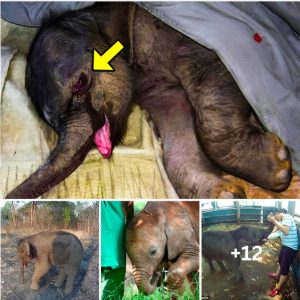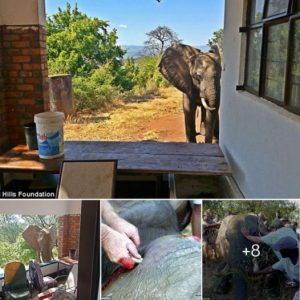Through observation studies and online research, a pattern of “normal elephant behaviour” is formed. A behavioural change may be a “red flag” indicating something may be going on before clinical symptoms present.
These can range from subtle behavioural changes to very obvious ones, such as withdrawing from interacting with other herd members, seeking attention from the Wildlife Rangers, or narrowing their behaviour range – engaging in less varied behaviours. If any red flags are noticed, we would liaise with our Vet Unit and the Department of National Parks and Wildlife (DNPW) vets.
Along with behavioural changes, there are other means of monitoring elephant health such as General Examinations and Physical Examinations.



During a general examination, which in most cases is hands off, the clinician looks at the body condition of the elephant (if it’s too thin or too fat or of the right body condition), and observe the elephant’s gait when walking or running. The elephant’s ribcage movements and other body parts are noted, alongside activities such as appetite, how many times the elephant has pooped/urinated, and the consistency, colour and appearance of their excretions.
Under a physical examination, which is usually invasive, the clinician performs a closer hands-on examination – checking the heart rate and mucus membranes, the temperature and the smell of the breath from the trunk.
These examinations are done twice a month every month.








